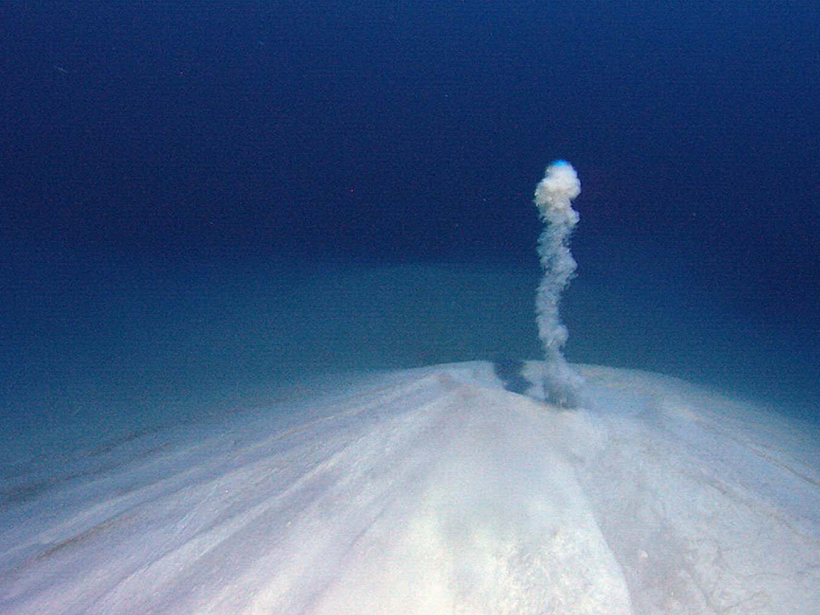Source: Geochemistry, Geophysics, Geosystems
Where one of Earth’s tectonic plates overrides another at a subduction zone, compaction and dehydration of sediments in the fore arc, the region of deformation closest to the trench, release fluids that increase pressure within the sediment pores. By altering local stresses, this elevated pressure can have profound effects on faults in zones known to be capable of generating large earthquakes.
To quantify the paths along which these fluids flow and better understand their connection to regions of elevated pore pressure, Saffer and Kopf have developed a model that tracks several natural chemical tracers within fluids expelled from sediments near the top of a subducting slab, including the concentration and isotopic composition of boron. The element’s distinctive characteristics, including its increasing release with rising temperature, make boron a particularly effective tracer of fluids originating in subduction zones’ seismically active regions. It can be measured in fluids sampled from seafloor seeps or boreholes using colorimetry (for boron concentration) or mass spectrometry (for isotopic signatures). The researchers used previously reported boron and boron isotope data to run their model.
Following their analysis, the team identified distinct differences between “cold” slabs, characteristic of older subducting crust, and “warm” slabs, characteristic of relatively younger crust. Because dehydration occurs at shallower depths in warmer slabs, release of boron is more rapid and thus leads to higher concentrations than in fluids released from the colder margins. The team also found systematic differences between nonaccretionary margins, which have little insulating sediment atop the subducting plate, and accretionary margins, which are characterized by thicker sediment blankets and thus warmer trench conditions.
In the final step of their analysis, the authors applied this technique to four previously studied margins to demonstrate that dehydration and the release of boron from compacting sediments can account for observed expelled fluid compositions and that their “fingerprinting” technique is able to constrain the fluids’ likely source regions. The results indicate fluid transport distances of more than 60 kilometers in the accretionary (warmer) Barbados margin and between 10 and 30 kilometers in the nonaccretionary (colder) northern Japan and Costa Rican subduction zones.
The work represents an important step toward understanding fluid flow pathways and exchanges of volatile elements between the solid Earth and oceans in subduction zones. Pinpointing the source region of fluids can provide better insight into regions of the plate interface where elevated fluid pressures are present and drive fluid migration toward the surface—a vital piece of the puzzle in regions that generate earthquakes. (Geochemistry, Geophysics, Geosystems, https://doi.org/10.1002/2016GC006635, 2016)
—Terri Cook, Freelance Writer
Citation:
Cook, T. (2017), Fingerprinting the source of fore-arc fluids, Eos, 98, https://doi.org/10.1029/2017EO067201. Published on 09 February 2017.
Text © 2017. The authors. CC BY-NC-ND 3.0
Except where otherwise noted, images are subject to copyright. Any reuse without express permission from the copyright owner is prohibited.

